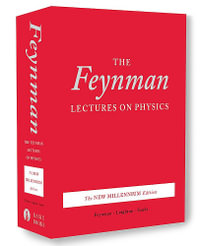| Preface | p. v |
| Model of a Taut Wire | p. 1 |
| Deriving the PDE model | p. 1 |
| Balance equation | p. 2 |
| Boundary conditions | p. 2 |
| Boundary conditions (in space) | p. 3 |
| Initial conditions (boundary conditions in time) | p. 4 |
| Anything else? | p. 5 |
| The Method of Galerkin | p. 7 |
| Residual of the balance equation | p. 7 |
| Integral test of the residual | p. 8 |
| Test function | p. 8 |
| Trial function | p. 10 |
| Manipulation of the residuals | p. 11 |
| Stiffness and mass matrix | p. 13 |
| Piecewise linear basis functions | p. 15 |
| How are the Galerkin and Finite Element Methods Related | p. 17 |
| Numerical quadrature | p. 18 |
| Putting it together: system of ODE's | p. 21 |
| Exercises | p. 22 |
| Statics and Dynamics Examples for the Wire Model | p. 27 |
| Statics | p. 28 |
| Statics: uniform load | p. 28 |
| Free vibration | p. 32 |
| Integration of transient motion | p. 33 |
| Using built-in Matlab solver | p. 34 |
| Using the Trapezoidal integrator | p. 35 |
| Exercises | p. 38 |
| Boundary Conditions for the Model of a Taut Wire | p. 41 |
| Mixed essential and natural boundary conditions | p. 42 |
| Essential boundary conditions only | p. 43 |
| Natural boundary conditions only | p. 43 |
| Overspecified boundary conditions | p. 44 |
| Model of Heat Conduction | p. 49 |
| Balance equation | p. 49 |
| Constitutive equation | p. 52 |
| Boundary conditions | p. 53 |
| On the sufficiency of boundary conditions | p. 54 |
| Initial condition | p. 55 |
| Summary of the PDE model of heat conduction | p. 56 |
| Exercises | p. 56 |
| Galerkin Method for the Model of Heat Conduction | p. 57 |
| Weighted residual formulation | p. 57 |
| Reducing the model dimension | p. 59 |
| Test and trial functions: basis functions on triangulations | p. 61 |
| Basis functions on the standard triangle | p. 63 |
| Discretizing the weighted residual equation | p. 66 |
| Derivatives of the basis functions; Jacobian | p. 70 |
| Numerical integration | p. 74 |
| Conductivity matrix | p. 76 |
| Surface heat transfer matrix and load | p. 80 |
| Exercises | p. 86 |
| Steady-state Heat Conduction Solutions | p. 89 |
| Steady-state heat conduction equation | p. 89 |
| Thick-walled tube | p. 89 |
| Orthotropic insert | p. 93 |
| The T4 NAFEMS Benchmark | p. 96 |
| Transient Heat Conduction Solutions | p. 101 |
| Discretization in time for transient heat conduction | p. 101 |
| The T3 NAFEMS Benchmark | p. 104 |
| Transient cooling in a shrink-fitting application | p. 107 |
| Expanding the Library of Element Types | p. 111 |
| Quadratic triangle T6 | p. 112 |
| Quadratic 1-D element L3 | p. 114 |
| Point element P1 | p. 114 |
| Integrating over n-dimensional domains | p. 115 |
| Tetrahedron T4 | p. 120 |
| Simplex elements | p. 122 |
| Quadrilateral Q4 | p. 123 |
| Hexahedron H8 | p. 124 |
| Extracting the mesh boundary | p. 124 |
| Exercises | p. 126 |
| Discretization Error, Error Control, and Convergence | p. 129 |
| Interpolation errors | p. 129 |
| Interpolation error for temperature | p. 129 |
| Interpolation error for temperature gradient | p. 132 |
| Controlling the error; Convergence rate | p. 134 |
| Richardson extrapolation | p. 136 |
| The T4 NAFEMS Benchmark revisited | p. 138 |
| Graded meshes | p. 139 |
| Shrink fitting revisited | p. 139 |
| Representing functions by interpolation | p. 141 |
| Exercises | p. 143 |
| Model of Elastodynamics | p. 145 |
| Balance of linear momentum | p. 145 |
| Stress | p. 147 |
| Balance of angular momentum and stress symmetry. | p. 150 |
| Local equilibrium | p. 152 |
| Change of linear momentum | p. 152 |
| Stress divergence | p. 152 |
| All together now | p. 156 |
| Strains and displacements | p. 156 |
| Constitutive equation | p. 159 |
| Boundary conditions | p. 161 |
| Example: concrete dam | p. 161 |
| Example: rigid punch | p. 162 |
| Formal definition of the boundary conditions | p. 163 |
| Inadmissible "concentrated" boundary conditions | p. 164 |
| Symmetry and anti-symmetry | p. 166 |
| Example: a pure-traction problem | p. 168 |
| Example: shaft under torsion | p. 170 |
| Example: overspecified boundary conditions | p. 172 |
| Initial conditions | p. 172 |
| Galerkin Formulation for Elastodynamics | p. 175 |
| Manipulation of the residuals | p. 175 |
| The first two steps | p. 175 |
| Step 3: Preliminaries | p. 176 |
| Step 3: The glorious conclusion | p. 177 |
| Method of weighted residuals as the principle of virtual work | p. 179 |
| Discretizing | p. 179 |
| The trial function | p. 179 |
| The test function | p. 181 |
| Producing the requisite equations | p. 182 |
| The discrete equations: system of ODE's | p. 184 |
| Inertial term: Mass matrix | p. 185 |
| Body loads and traction loads | p. 186 |
| Resisting forces: Stiffness matrix | p. 186 |
| Summary of the elastodynamics ODE's | p. 187 |
| Constitutive equations of linearly elastic materials | p. 188 |
| General anisotropic material | p. 188 |
| Orthotropic material | p. 188 |
| Transversely isotropic material | p. 189 |
| Isotropic material | p. 190 |
| Imposed (thermal) strains | p. 191 |
| Strain-displacement matrix | p. 193 |
| Transformation of basis | p. 194 |
| Stiffness matrix | p. 197 |
| Pure-traction problems and singular stiffness | p. 199 |
| Exercises | p. 200 |
| Finite Elements for True 3-D Problems | p. 201 |
| Modal analysis with the tetrahedron T4: the drum | p. 201 |
| Modal analysis with the tetrahedron T4: the composite rod | p. 204 |
| Tetrahedron T10 | p. 207 |
| Example: the drum revisited | p. 208 |
| The composite rod with the tetrahedron T10 | p. 209 |
| Static analysis with hexahedra H8 and H20 | p. 210 |
| Hexahedron H8 | p. 210 |
| Dilatational locking | p. 211 |
| Shear locking | p. 214 |
| Thin clamped square plate with concentrated load | p. 215 |
| Quadratic element H20 | p. 216 |
| Quadratic element Q8 | p. 220 |
| Pinched cylinder | p. 221 |
| Pinched sphere | p. 222 |
| Beam deflection revisited | p. 223 |
| Errors, validation, and verification | p. 224 |
| Verification and Prediction | p. 226 |
| Validation | p. 227 |
| Errors | p. 227 |
| Using modeling to make predictions | p. 227 |
| Using benchmarks | p. 228 |
| Exercises | p. 230 |
| Analyzing the Stresses | p. 231 |
| Singularities | p. 231 |
| Interpretation of stresses | p. 234 |
| Stress concentrations | p. 235 |
| Plane Strain, Plane Stress, and Axisymmetric Models | p. 237 |
| Plane strain model reduction | p. 237 |
| Plane stress model reduction | p. 240 |
| Model reduction for axial symmetry | p. 242 |
| Material stiffness for two-dimensional models | p. 245 |
| Strain-displacement matrices for two-dimensional models | p. 246 |
| Integration for two-dimensional models | p. 247 |
| Thermal strains in two-dimensional models | p. 249 |
| Examples | p. 250 |
| Thermal strains in a bimetallic assembly | p. 250 |
| Orthotropic balloon | p. 254 |
| Transient dynamic analysis | p. 257 |
| Centered difference time stepping | p. 257 |
| Example: stress wave propagation | p. 259 |
| Exercises | p. 263 |
| Consistency + Stability = Convergence | p. 265 |
| Consistency | p. 265 |
| Completeness | p. 265 |
| Compatibility | p. 267 |
| Stability | p. 268 |
| Conclusion | p. 269 |
| Exercises | p. 270 |
| Bibliography | p. 271 |
| Index | p. 273 |
| Table of Contents provided by Ingram. All Rights Reserved. |
























